1. Understanding the Basics of Hyperbaric Oxygen Therapy
Hyperbaric Oxygen Therapy (HBOT) involves breathing pure oxygen in a pressurized environment, significantly enhancing the body’s natural healing process. It’s a proven treatment for a range of conditions, from chronic wounds to decompression sickness. The high-pressure environment increases oxygen absorption in the body’s tissues, promoting faster healing and infection control.
The therapy is given in specialized chambers, either designed for a single patient (monoplace) or multiple patients (multiplace). HBOT’s efficacy lies in its ability to rapidly increase oxygen concentration in blood and tissues, which is crucial for treating conditions where blood flow is restricted. This unique therapy has evolved to become more accessible, from medical use to aiding athlete recovery.
2. Types of Hyperbaric Oxygen Chambers
Building on the understanding of the basics of HBOT, it’s essential to explore the different types of chambers used in this treatment, each offering unique features and applications. Here are the types of chambers:
Monoplace Chambers
Monoplace chambers are designed to accommodate a single patient at a time, offering a personalized treatment experience. They resemble long, cylindrical tubes where the patient lies inside, breathing pure oxygen in a controlled, pressurized environment. These chambers are widely used in medical settings like hospitals and private clinics due to their efficiency and effectiveness for individual treatments.
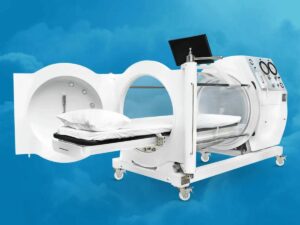
Multiplace Chambers
Multiplace chambers, designed for treating multiple patients simultaneously, offer enhanced treatment efficiency. They resemble rooms where patients can sit or lie down, with medical staff able to monitor and accompany patients during treatment. OxygenArk offers these advanced multiplace chambers, setting a standard in efficient and versatile HBOT treatment solutions.

Portable Chambers
Portable HBOT chambers offer a flexible and convenient solution for those needing treatment outside of traditional medical facilities. Typically smaller, foldable, and can be set up in various settings, including a patient’s home, making them ideal for personal use. Despite having lower pressure settings than traditional chambers, their convenience and accessibility make them a preferred option for ongoing treatments.
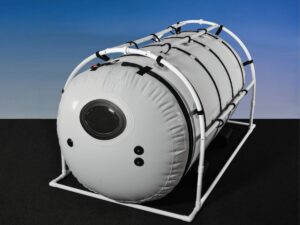
Veterinary Chambers
Veterinary HBOT chambers are increasingly used in advanced veterinary care, specially designed to cater to the needs of animal patients, ranging from small pets to larger animals. They vary in size and are tailored to accommodate the specific requirements of different animal types, ensuring a safe and effective treatment environment.
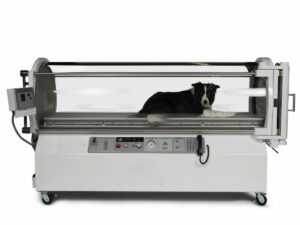
3. Factors Influencing the Cost of HBOT
Following the exploration of the various types of hyperbaric oxygen chambers, the next focus is to understand the diverse factors that influence the cost of HBOT treatments. Here are several critical factors to look at:
Chamber Type
The cost of HBOT is significantly influenced by the type of chamber used. Monoplace chambers, accommodating only one patient, might be priced differently from multiplace chambers that hold multiple patients. The price variation is attributed to factors such as the technology used, the chamber’s size, and its advanced features.
Treatment Duration and Frequency
The overall cost of HBOT is determined by the frequency and duration of treatment sessions. For example, longer sessions or a greater number of treatments typically lead to higher costs. These variables depend on the specific medical conditions being treated and how the patient responds to therapy.
Operational Costs
Operational expenses such as staffing, maintenance, and utilities contribute significantly to the cost of HBOT. These costs are essential to maintaining the safety and functionality of the chambers. Regular upkeep and qualified staff are necessary for the efficient operation of HBOT facilities, thus affecting the overall pricing.
Facility Type
The type of facility offering HBOT affects its cost. For example, hospitals, private clinics, and specialized HBOT centers each have different operational costs and levels of service, which are reflected in their pricing structures. The choice of facility can therefore significantly influence the cost of the treatment.
|
Factor
|
Influence on Cost
|
Considerations
|
|
Chamber Type
|
Significant influence on cost. Monoplace chambers may have different pricing than multiplace chambers due to technology, size, and features.
|
Consider the specific needs and capacity requirements when selecting a chamber type. Understand the technology and features that contribute to the cost variation.
|
|
Treatment Duration and Frequency
|
Directly impacts overall cost. Longer sessions or more frequent treatments generally lead to higher costs.
|
Plan treatment schedules based on medical conditions and patient response to optimize cost-effectiveness. Be mindful of potential budget implications with extended or frequent sessions.
|
|
Operational Costs
|
Substantial contribution to the cost. Includes staffing, maintenance, and utilities for ensuring chamber safety and functionality.
|
Budget for operational expenses to guarantee safety and functionality. Regular maintenance and qualified staff are critical for efficient operations and will affect overall pricing.
|
|
Facility Type
|
Influences overall cost. Different types of facilities (hospitals, private clinics, specialized HBOT centers) have varying operational costs.
|
Choose the facility type based on specific needs and budget considerations. Understand how different facilities may offer distinct levels of service, impacting the overall cost of HBOT treatments.
|
4. Average Cost Range of HBOT Treatments
Transitioning from the factors that influence HBOT costs, let’s now examine the specific cost ranges in various treatment settings. Here are the various options available presenting a unique cost structure:
In-Hospital Treatments
Hospital-based HBOT treatments are among the most expensive, due to the high level of medical care and advanced technology involved. A single session of these treatments can reach up to more than $1,000. The high cost reflects the comprehensive medical support and use of sophisticated hyperbaric chambers in these settings.

Private Clinics
Private clinics offer HBOT with a more personalized touch and often have varied pricing based on the clinic’s facilities and the level of care provided. The cost in these settings generally ranges from $250 to $600 per session. This price variation accounts for factors such as the type of hyperbaric chamber used and the clinic’s geographical location.

Specialized HBOT Centers
Specialized HBOT centers, focused solely on hyperbaric treatments, tend to offer more competitive pricing. The cost for a session in these centers usually falls between $125 to $350. These centers balance specialized care with cost efficiency, making them a more accessible option for many.
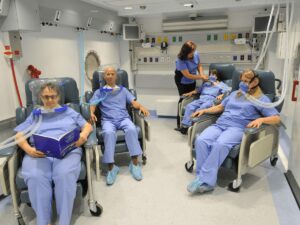
5. Insurance Coverage and Financial Assistance
After understanding the average cost range, exploring insurance coverage and financial assistance options is crucial to effectively manage HBOT treatment costs. Here are the essential options to take note of:

Health Insurance Policies
Many health insurance policies cover Hyperbaric Oxygen Therapy for FDA-approved conditions such as wound healing and carbon monoxide poisoning, but coverage for other uses may vary. Patients should check with their insurer for specifics, including pre-authorization requirements and covered conditions. Understanding the deductible, co-pay, and co-insurance terms is also crucial to estimate out-of-pocket expenses.
Government Programs
Government health programs like Medicare and Medicaid in the U.S., or national health services in other countries, may cover HBOT for certain medical conditions. Coverage usually requires a physician’s referral and proof of medical necessity, and the range of covered conditions can vary by program. Patients should contact their program representative to understand eligibility, coverage limits, and the process for claims.
Financial Assistance Programs
Various non-profit organizations and charities offer financial assistance for HBOT to individuals who cannot afford it and are uninsured or underinsured. These programs often focus on specific patient groups, such as veterans or those with particular medical conditions like traumatic brain injuries. Eligibility criteria, application processes, and the extent of aid vary, so direct contact with these organizations is essential.
Partnership Programs with HBOT Providers
Businesses and HBOT service providers can form partnerships for financial benefits like discounted rates or shared revenue models. This is valuable for sports facilities, rehab centers, and private clinics looking to offer HBOT without high operational costs. Successful partnerships require careful negotiation and aligning mutual interests.
6. Alternative Financing Options
Following the discussion on insurance coverage and financial assistance, let’s explore alternative financing options available to aid in the funding of HBOT treatments. Here are some of the alternative options:
Corporate Loans
Corporate loans are applicable financing option for businesses seeking to integrate HBOT into their services. They offer the necessary funds to invest in HBOT equipment and training. By utilizing these loans, businesses can expand their service offerings, potentially increasing their client base and revenue.

Equipment Leasing
Equipment leasing provides businesses an alternative to purchasing HBOT chambers directly. This option allows for the use of state-of-the-art HBOT equipment with lower initial expenses and flexible payment terms. It is an ideal solution for businesses aiming to offer HBOT services without committing to a large initial investment.
Business Lines of Credit
A business line of credit offers flexible financing, enabling companies to access funds when required for their expenses related to HBOT. It’s particularly useful for managing cash flow fluctuations or unexpected costs related to HBOT services. This option allows businesses to efficiently fund their HBOT services, giving them greater flexibility.
Grants for Medical Innovation
Grants for medical innovation are available to businesses that contribute to advancements in medical technology or treatment methods, including HBOT. Applying for these grants can provide non-repayable funding to support the implementation or enhancement of HBOT services. This option is ideal for businesses focused on innovative medical solutions and research.

Strategic Partnerships and Collaborations
Forming strategic partnerships or collaborations with other companies or medical institutions can provide mutual benefits in offering HBOT. Through these partnerships, businesses can share the financial burden and resources needed for HBOT services. This collaborative approach not only aids in financing but also enhances service quality and market reach.
7. Additional Expenses Related to HBOT
After diving into the alternative financing options for HBOT, it’s essential to also consider the various additional expenses that can accompany this treatment. Here are some key areas where extra costs may arise:
Facility Integration Costs
Integrating HBOT systems into existing medical or therapeutic facilities requires significant investment. This includes costs for structural modifications, installation of the chambers, and ensuring compliance with safety regulations. It’s crucial for businesses to factor in these initial setup expenses when considering offering HBOT services.
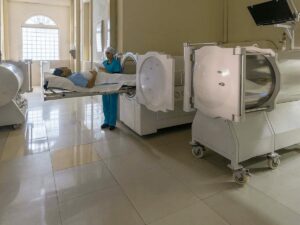
Staff Training and Certification
Offering HBOT services necessitates specialized training and certification for staff. This involves expenses related to training courses, certification programs, and potentially hiring qualified hyperbaric technicians. Continuous education and recertification also contribute to ongoing operational costs. OxygenArk provides resources and support tailored to the unique needs of HBOT service providers.

Equipment Upkeep and Compliance
Regular maintenance and servicing of HBOT equipment are essential to ensure safety and functionality. This includes costs for periodic inspections, replacement parts, and compliance with health and safety standards. Failing to maintain equipment can lead to costly repairs, downtime, and potential regulatory issues.
Technology Upgrades
Staying competitive in the HBOT market often requires periodic upgrades to the latest technology and equipment. Investing in advanced hyperbaric chambers and monitoring systems can significantly enhance treatment efficacy but comes with significant expenses. These upgrades are essential for maintaining a high standard of care and keeping up with industry advancements.
8. Navigating Discounts and Affordable Options for HBOT
Data Bridge Market Research anticipates significant growth in the global HBOT market from 2023 to 2030. Here are several approaches for finding cost-effective HBOT options to suit various financial situations:
Negotiating with Providers
Effective cost management for HBOT can often start with direct negotiations with treatment providers. Patients can discuss treatment packages, ask for adjusted rates, or inquire about any sliding scale fees, which are determined by income or the frequency of sessions. It’s important to approach these discussions openly and inquire about any available financial relief options.
Group Treatment Discounts
Many HBOT centers offer discounts for group treatments or for booking multiple sessions in advance. This can be particularly beneficial for organizations managing multiple patients or for individuals who require extended treatment plans. Exploring these bulk or group booking options can lead to substantial savings over the course of treatment.

Seasonal Offers and Promotions
HBOT centers occasionally run seasonal promotions or special offers to attract new clients or to fill appointments during slower periods. Patients should regularly check the websites and social media pages of local HBOT centers or sign up for their newsletters to stay informed about such offers. Taking advantage of these promotions can significantly reduce the overall cost of treatment.
Non-profit Organizations and Charities
Some non-profit organizations and charities offer reduced-cost or discounted HBOT treatments for qualifying individuals. These organizations aim to make HBOT more accessible to those who may not be able to afford the full cost. Patients can research local and national organizations that provide financial assistance for medical treatments, including HBOT.

Dive Deeper Into Our Resources
For some insightful reads, we’ve curated a list of recommended articles just for you:
Still haven’t found what you’re looking for? Don’t hesitate to contact us. We’re available around the clock to assist you.
Conclusion
Hyperbaric Oxygen Therapy presents a fascinating balance of cost and value, offering significant health benefits under various medical and therapeutic contexts. This guide offers insights equipping you with the knowledge to make informed decisions about HBOT applications and investments for your business.
For those seeking further information or personalized advice regarding HBOT, OxygenArk is an excellent resource. Contact us for customized guidance on HBOT options to meet your specific requirements.















